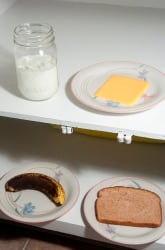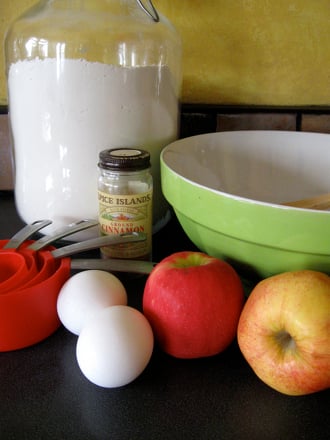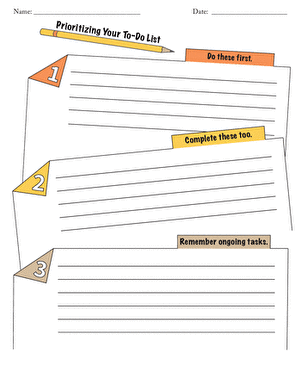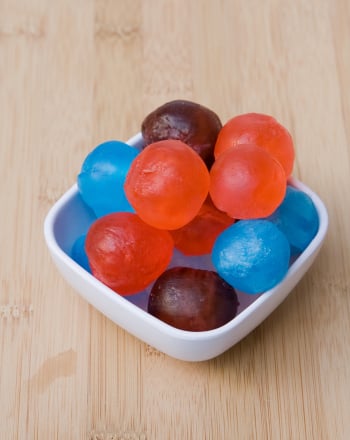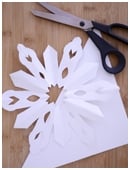Science project
Do Hand Soaps and Sanitizers Prevent the Growth of Bread Mold?
Have you ever gone to make a sandwich only to discover that the last two slices of bread have mold on them? We are always told to use soaps and hand sanitizers to clean our hands of tiny organisms, but will they prevent mold growth, too?
Problem:
Determine whether or not hand soaps and sanitizers prevent the growth of bread mold.
Materials:
- 8 slices of fresh bread with no preservatives
- 16 sealing plastic sandwich bags
- Latex or Nitrile gloves
- Sticky labels or masking tape
- Pen
- Toaster
- Knife
- Spray bottle
- Baking sheet
- Camera
- Measuring teaspoon
- Liquid Soap
- Hand Sanitizer
Procedure:
- Put on the gloves. In addition to keeping our hands clean, why else do you think we might want to wear gloves while we set up our experiment?
- Toast 4 slices of bread. What effect do you think toasting the bread will have on mold growth?
- Cut all 8 of the bread slices in half so that you have 16 pieces total: 8 toasted pieces and 8 untoasted pieces.
- You will be creating specimens in sandwich baggies according to the following chart:
| Bag Number | Sealed? | Toasted? | Treatment: |
| 1 | Sealed | Toasted | None |
| 2 | Sealed | Toasted | Water only |
| 3 | Sealed | Toasted | Hand Soap only |
| 4 | Sealed | Toasted | Hand Sanitizer only |
| 5 | Sealed | Untoasted | None |
| 6 | Sealed | Untoasted | Water only |
| 7 | Sealed | Untoasted | Hand Soap only |
| 8 | Sealed | Untoasted | Hand Sanitizer only |
| 9 | Unsealed | Toasted | None |
| 10 | Unsealed | Toasted | Water only |
| 11 | Unsealed | Toasted | Hand Soap only |
| 12 | Unsealed | Toasted | Hand Sanitizer only |
| 13 | Unsealed | Untoasted | None |
| 14 | Unsealed | Untoasted | Water only |
| 15 | Unsealed | Untoasted | Hand Soap only |
| 16 | Unsealed | Untoasted | Hand Sanitizer only |

- Put 1 piece of untoasted bread in a sandwich bag and seal it. Label it as “untoasted, sealed.”
- Put 1 piece of toasted bread in a sandwich bag and seal it. Label it as “toasted, sealed.”
- Put 1 piece of untoasted bread in a sandwich bag and leave it unsealed. Label it as “untoasted, unsealed.”
- Put 1 piece of toasted bread in a sandwich bag and leave it unsealed. Label it as “toasted, unsealed”. Why do you think we’re leaving some of the bags unsealed? What effect do you think this will have on mold growth?
- Fill the spray bottle with water.
- Put 2 pieces of toasted bread and 2 pieces of untoasted bread into their own sandwich bags.
- Spray each piece lightly with water.
- Close 1 of the toasted bags and 1 of the untoasted bags, leaving the other two unsealed. Label each bag appropriately (for example: “untoasted, unsealed, water”).
- Add 1 teaspoon of soap to the water in the spray bottle. Mix well.
- Put each of 2 pieces of toasted bread and each of 2 pieces of untoasted bread into their own sandwich bags.
- Spray each piece lightly with the soapy water.
- Close 1 of the toasted bags and 1 of the untoasted bags, leaving the other two unsealed. Label each bag appropriately (for example: “sealed, toasted, soap”)
- Dump out the soapy water in the spray bottle and wash the bottle well. Fill it again with water and add 1 teaspoon of hand sanitizer. Mix well.
- Put each of 2 pieces of toasted bread and each of 2 pieces of untoasted bread into their own sandwich bags.
- Spray each piece lightly with the hand sanitizer-water mixture.
- Close 1 of the toasted bags and 1 of the untoasted bags, leaving the other two unsealed. Label each bag appropriately (for example: “sealed, untoasted, hand sanitizer”).
- Lay out all of the bags on the baking sheet spray-side up. Be sure the labels are visible.
- Place the tray in a warm, dark place. Why do you think we’re leaving our bags in these conditions? What does mold need to grow?
- After 1 week, seal all of the open bags. Be sure not to open any of the bags again once mold starts to grow. Which bread do you think will grow the most mold? Which bread do you think will grow the least? Why? Use this as an opportunity to formulate your hypothesis.
- Take notes and pictures over the next 21 days. When does mold start growing? Which grows the fastest? If you cannot take pictures, a great way to document mold growth is by recording your observations in a sketchbook!
- After you’ve completed your experiment, dispose of the bread, keeping the bags sealed.
Results:
Your results will vary, but you should notice the following patterns:
- The open bags should have grown more mold than their sealed counterparts.
- Damp bread should have grown the most mold.
- The sealed and toasted specimen sprayed with hand sanitizer should have grown the least mold.
- In general, toasted bread will have grown less mold than untoasted bread.
- Soap will not have been as effective in preventing mold growth as then hand sanitizer, but it will have prevented more growth than the wet bread and the control group.
Why?
Molds need water and nutrients to grow. The wet, untoasted bread specimens will have grown the most mold because they fit these conditions the best. The high heat produced by toasting dries out and breaks down many of the nutrients in bread, so the mold will have less water and fewer nutrients to feed on.
The bags that were left unsealed for a week will have grown more mold than the closed bags because of how mold travels. Molds reproduce by releasing spores, which are the fungi-equivalent of seeds. Spores can travel easily through the air because they are so small. Their spores can often travel even farther by attaching to clothing or the fur of animals, and some can survive extreme conditions like the heat of a desert or the cold of Arctic regions. (Remember when we asked you why we’d want to put on gloves for this experiment? Wearing gloves prevents contamination of the bread by any germs we may have on our hands. Wearing gloves makes sure that mold is introduced to the bread naturally.)
The active ingredient in hand sanitizer is Ethyl Alcohol. Ethyl alcohol can kill bacteria directly, but can also prevent fungal growth because alcohol is a good drying agent. This means that alcohol sucks up the moisture that the mold uses to reproduce.
Many soaps do not contain alcohol, but they do contain other chemicals like acids and sulfates which can act as drying agents. Soap may also directly kill fungi if it contains certain antifungal chemicals. If you want to get serious with this project, do some research on the types of chemicals found in whatever brand of soap you used, and see if any of them are classed as antifungals!
There are four major types of bread mold. You may grow one, or you may grow them all. Which types of mold did your bread grow?
- Rhizopus – gray or black, fuzzy
- Penicillium – grayish green to white
- Aperaillius – green-blue to brown, grows fast in large clumps
- Fusarium – brownish or reddish, very fast growing
We may not want to eat mold, but mold can be a beautiful thing! Many molds are used to produce life-saving medicines, or clean up toxic oil spills from the environment. They are great for many biological and engineering purposes because they are simple and reproduce quickly.
Education.com provides the Science Fair Project Ideas for informational purposes only. Education.com does not make any guarantee or representation regarding the Science Fair Project Ideas and is not responsible or liable for any loss or damage, directly or indirectly, caused by your use of such information. By accessing the Science Fair Project Ideas, you waive and renounce any claims against Education.com that arise thereof. In addition, your access to Education.com's website and Science Fair Project Ideas is covered by Education.com's Privacy Policy and site Terms of Use, which include limitations on Education.com's liability.
Warning is hereby given that not all Project Ideas are appropriate for all individuals or in all circumstances. Implementation of any Science Project Idea should be undertaken only in appropriate settings and with appropriate parental or other supervision. Reading and following the safety precautions of all materials used in a project is the sole responsibility of each individual. For further information, consult your state's handbook of Science Safety.

